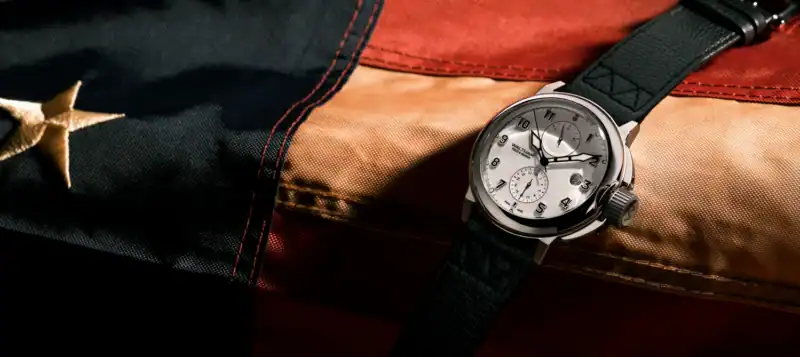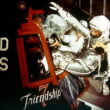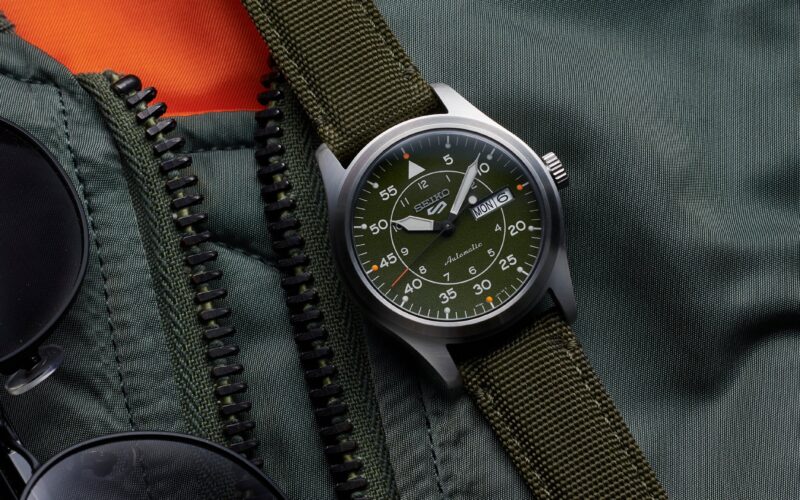From masterful mechanics to digital innovation – a look at the technical refinements of the pilot’s watch
Pilot’s watches, once an indispensable tool in aviation, have constantly evolved over the years, both technically and visually. Today, they are not only a symbol of precision and reliability, but also of mechanical sophistication and innovative design. But what actually makes a pilot’s watch and what technology is behind the various models – from classic mechanical watches to modern digital versions? In this article, we take a deep dive into how pilot’s watches work and explain the technical side of these fascinating timepieces.
How a mechanical wristwatch works
The characteristic features of a pilot’s watch
The appearance of a pilot’s watch is not just a question of style, but above all of functionality. Even at first glance, its distinctive features are striking: A large dial that is easy to read, often with clear, high-contrast numerals and hands. Pilot’s watches are designed to be easy to read even in poor light or extreme weather conditions – a feature that is crucial for pilots in the air.
Another typical feature of many pilot’s watches is the rotating bezel, which is used for both timekeeping and navigation. It makes it possible to mark different times, such as the start of a flight or a specific point in the course of a flight that is important. In some cases, these bezels are also fitted with a scale that can be used to calculate flight distances and speeds, for example.
The distinctive leather strap, often riveted, is not only a visual highlight, but also functional: it was originally designed to be worn over a pilot’s jacket. The large crown on pilot’s watches is also no coincidence. It is designed so that it can be easily operated even when wearing gloves – a decisive advantage at icy altitudes or in emergency situations where quick time adjustment is required.
The appearance of a pilot’s watch is not just a question of style, but above all of functionality.
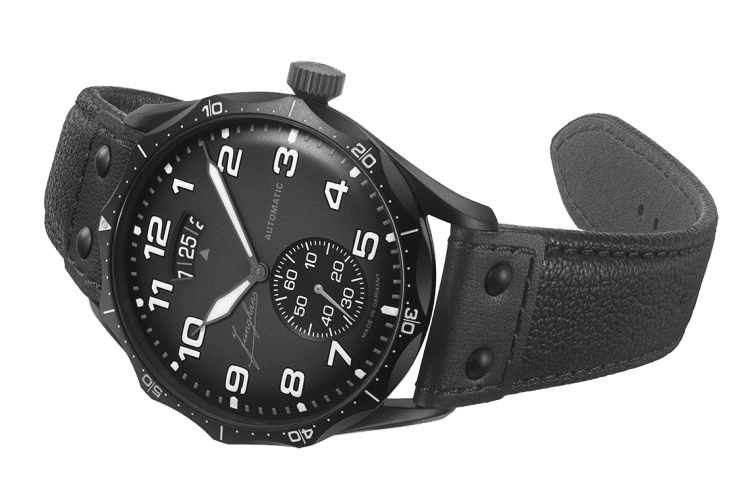
Mechanical and automatic pilot watches – the world of gears
In the world of mechanical pilot watches, gears play a decisive role in ensuring precise timekeeping. The interaction of the various gears determines how the watch displays and measures the time. The most important gears found in every mechanical watch are the second wheel, the minute wheel and the hour wheel. These three wheels form part of the so-called gear train, which controls the movement of the hands on the dial.
The second wheel is directly coupled to the escapement wheel and the escapement. The movement is regulated by the balance wheel – the oscillating organ – which measures the time in regular oscillations. With each oscillation released by the escapement, the fourth wheel rotates by a small angle. In mechanical wristwatches, the second wheel usually makes one complete rotation per minute. It ensures a precise seconds display by driving the seconds hand directly or via an intermediate wheel.
The minute wheel is coupled to the second wheel by a fixed transmission ratio. To ensure that the minute wheel makes one complete revolution per hour, the gear ratio is selected so that the second wheel requires 60 revolutions for one revolution of the minute wheel. The minute wheel therefore moves 1/60 as fast as the second wheel. As the second wheel makes one revolution per minute, the minute wheel needs 60 minutes for one revolution.
The hour wheel is connected to the minute wheel via another gear wheel. The gear ratio is designed so that the hour wheel makes only a fraction of a revolution for every full revolution of the minute wheel. As a rule, it is designed so that the hour wheel makes one complete revolution in 12 hours. The ratio between the minute wheel and the hour wheel is therefore 1:12, which means that the hour wheel completes one revolution in 12 hours, while the minute wheel rotates 12 times in this time.
This gear system ensures that the continuous energy from the mainspring is transferred to the time display in a controlled and uniform manner. The escapement mentioned above plays a central role here, as it divides the rotation of the gear train into precisely measured steps that are synchronized with the oscillation of the balance wheel. This prevents the energy from being released too quickly or irregularly, allowing the hands to move smoothly and precisely. Thanks to the precise coordination of the gears, the time measurement remains stable for many hours until the spring has to be wound up again.
Speaking of winding: Automatic pilot’s watches have a special technical refinement – the rotor. This semi-circular oscillating weight in the movement is set in rotation by the movements of the wrist and uses the energy generated to wind the timepiece. A clever system of gears transfers the kinetic energy to the mainspring, which is then tensioned and supplies the watch with energy. In some movements, the spring can even be wound in both directions of the rotor movement, which means that every movement of the rotor is used efficiently to keep the small technical marvel running precisely.
The flyback function was specially developed for pilots to enable quick and precise time measurements.
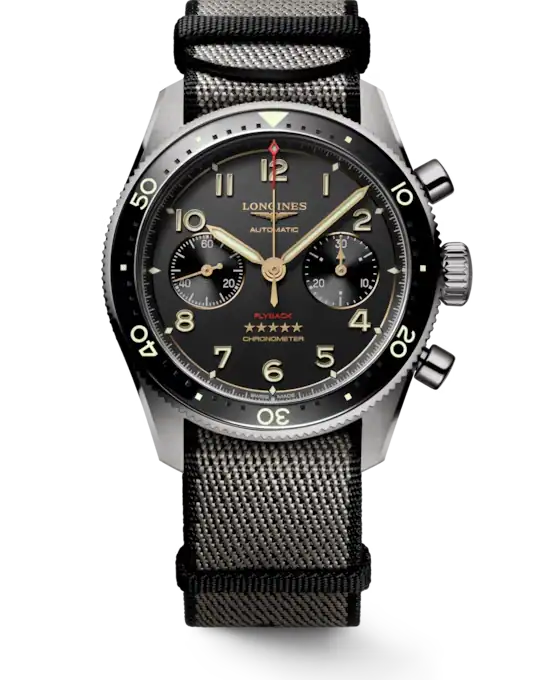
The flyback function – everything on start with one click
One of the most remarkable functions of many pilot’s watches is the so-called flyback function. This complication, or additional function, was specially developed for pilots to enable quick and precise time measurements, for example during flight maneuvers or when timing navigation procedures. In contrast to conventional chronographs, where the stop process has to be stopped, reset and restarted manually, the flyback function allows the chronograph to be restarted immediately at the touch of a button.
This is particularly useful in situations where time is of the essence. Pilots can record different flight phases or maneuvers precisely in time without having to press several buttons in a specific sequence. The mechanism behind this function is extremely complex and requires precise coordination of the gears in the chronograph movement. A spring mechanism ensures that the stopwatch hand immediately jumps back to its zero position and can start measuring time again straight away.
Popular additional functions of pilot’s watches
In addition to the chronograph stopwatch function, pilot’s watches are characterized by other useful complications that are specially tailored to the needs of pilots. For example, many modern models have a date display and a power reserve indicator, which provides reliable information on how long the watch will run before it needs to be rewound. The world time function is particularly practical for frequent flyers: it makes it possible to read the local time and the time in another time zone at the same time. This is realized either by a separate dial or an additional hand that indicates the second time zone.
Digital pilot’s watches often offer a variety of functions that go beyond pure timekeeping.

Digital pilot watches – Ultramodern technology in the cockpit
Mechanical and automatic pilot’s watches may impress with their craftsmanship and precision, but digital pilot’s watches have also gained a firm place in modern aviation. They offer a wealth of functions that go far beyond mere timekeeping. They are often equipped with integrated stopwatches, alarm functions, barometers and even GPS modules that enable pilots to determine their exact position and altitude.
These digital features are particularly useful in today’s aviation, as they provide pilots with a wealth of important information at a glance. An outstanding advantage of digital pilot watches is their versatility and adaptability. Thanks to the latest technology, they can integrate functions such as flight path tracking, weather monitoring and even emergency signals. The LCD displays used are designed to remain perfectly readable in all lighting conditions.
The pilot’s watch as a masterpiece of precision and technology
Whether mechanical, automatic or digital – pilot’s watches combine masterful craftsmanship with state-of-the-art technology. From the precise interplay of gears in mechanical watches to the sophisticated digital functions of modern models, they offer a fascinating symbiosis of tradition and innovation. The development of complications such as the flyback function underlines how specifically these watches were designed to meet the requirements of pilots. They are far more than mere timepieces: they function as indispensable instruments in the cockpit, impressing with their striking design and technical sophistication. The pilot’s watch remains a timeless symbol of adventure, precision and absolute reliability.
More about pilot’s watches
The great watch lexicon – The most important technical terms relating to pilot watches
